Salvia Nemorosa (‘Woodland Sage’) Is An Ideal Wildlife Plant: How To Grow Yours


Elizabeth is a Permaculture Garden Designer, Sustainability Consultant and Professional Writer, working as an advocate for positive change. She graduated from the University of St. Andrews with an MA in English and Philosophy and obtained a Diploma in Applied Permaculture Design from the Permaculture Association.
Reviewed By COLIN SKELLY

Colin is a Horticulturist and Horticultural Consultant with experience in a range of practical and managerial roles across heritage, commercial and public horticulture. He holds the Royal Horticultural Society’s Master of Horticulture award and has a particular interest in horticultural ecology and naturalistic planting for habitat and climate resilience.
Salvia nemorosa (‘Woodland Sage’) is a wonderful option for a wildlife-friendly space.
Though non-native, it can thrive in many UK gardens.
In this article, you will learn why you may wish to grow this plant, and where to place it if you do.
Overview
| Botanical Name | Salvia nemorosa |
| Common Name(s) | Balkan Clary / Woodland Sage |
| Plant Type | Perennial |
| Native Area | Central Europe and West Asia |
| Hardiness Rating | H7 |
| Foliage | Deciduous |
| Flowers | Upright spikes of purple flowers |
| When To Plant | May-June |
| When To Prune | September-November |
Sunlight
Preferred
Full Sun or Partial Shade
Exposure
Exposed or Sheltered
Size
Height
0.1 – 1M
Spread
0.1 – 0.5M
Bloom Time
Summer / Autumn
Soil
Preferred
Chalk, loam or sand
Moisture
Moist but well-drained
pH
Any
S. nemorosa is a member of the Salvia (sage) genus.
It is a hardy, herbaceous woodland perennial native to broad swathes of Central Europe and Western Asia.1Salvia nemorosa. (n.d.). Kew Royal Botanic Gardens. Retrieved March 24, 2023, from https://powo.science.kew.org/taxon/urn:lsid:ipni.org:names:456774-1
The name nemorosa refers to the plant’s native woodland grove habitat, meaning ‘of woods’.2nemorosa – Translation and Meaning in Almaany English-English Dictionary. (n.d.). Retrieved March 24, 2023, from https://www.almaany.com/en/dict/en-en/nemorosa/
‘Caradonna’ is the name of one popular cultivar of this plant.
It has been rewarded with the RHS Award of Garden Merit and is named on the RHS Plants for Pollinators list.
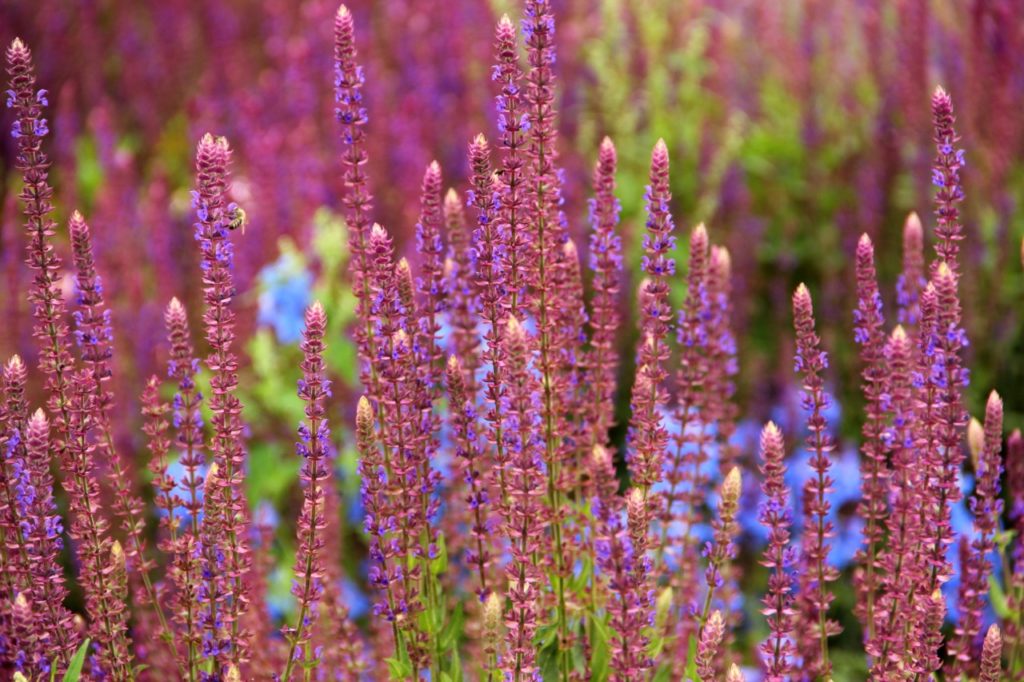
It has dark purple stems and purple-violet stems borne in long, upright spikes.
This plant is beneficial for bees and other pollinators due to its nectar-rich flowers.
That nectar is available over a long period, as the plants can be in bloom between June and October, providing a bounty of sustenance and attracting beneficial insects all summer long.
Bees can see purple and white flowers easily, and the purple blooms of these flowers stand out for them in the summer garden.
Butterflies also love this plant, so it is a good addition to a butterfly-friendly garden.
“Salvia nemerosa is one of my favourite plants for including in herbaceous plantings for providing a long period of flowering for pollinators,” shares Master Horticulturist Colin Skelly.
“As a garden plant, it is also tough and versatile, combing well with many other perennials and grasses and needing little looking after.”
Planting Woodland Sage
Plant S. nemorosa in May or June and it will grace your garden for a number of years to come.
As a herbaceous perennial, it will die back in winter but burst back into new growth each spring.
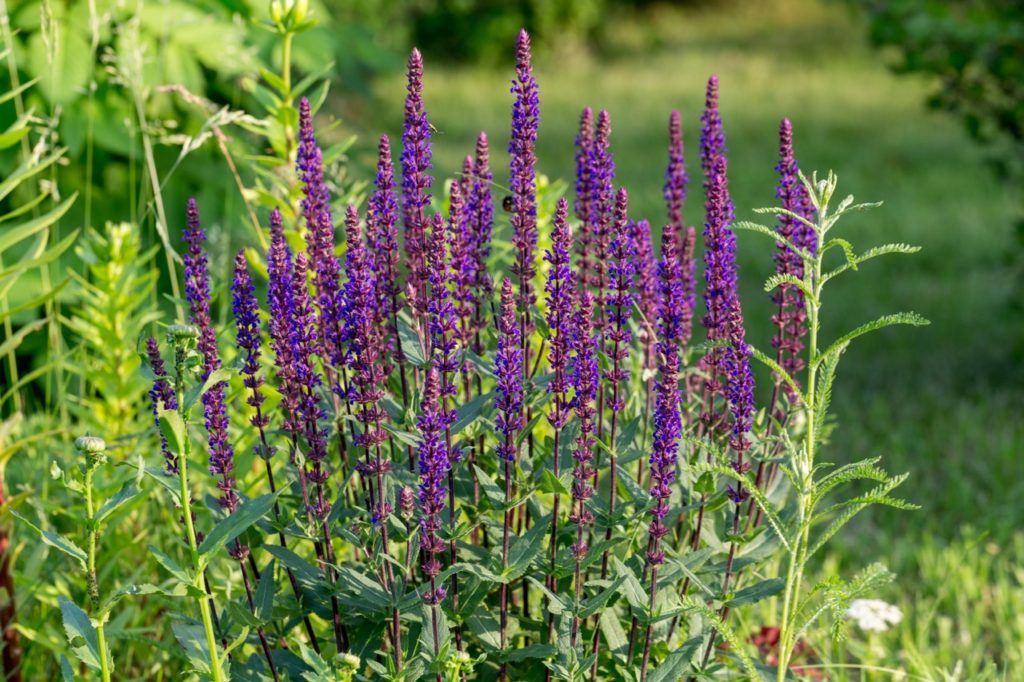
This plant is wonderful on the fringes of a forest garden or woodland space.
It also works very well in herbaceous borders, or with other perennial plants in a mixed bed or border planting scheme.
Planted around the fringes of a kitchen garden, it can bring in pollinators and other beneficial insects and ensure good pollination rates on common garden crops.
How To Plant Out
S. nemorosa can be purchased in pots, and if you purchase a plant in autumn, it is best to wait until after the last frost before planting it out.

Trim back the plant a little to encourage bushy growth and plant in the ground or container where it is to grow once the risk of frost is passed.
Plant Care
This hardy perennial can be a great low-maintenance plant for a suitable spot.
You should find them an easy and rewarding plant to grow, provided you follow the simple advice below:
Aspect
A south-facing or west-facing aspect can be ideal for S. nemorosa.

Although the plants can cope with partial or dappled shade, a sunny and sheltered location will be optimal.
Overwintering
S. ‘Caradonna’ is one of the many H7 hardy perennial sages and will survive the winter across the UK, even during harsh winters.
Soil Requirements
The soil in a suitable spot will be moist yet free-draining.
Once established, this plant can be pretty drought tolerant, but cannot tolerate waterlogged soil.

Chalk, loam or sandy soil is ideal, and those with heavy clay may find it more difficult to create the right growing conditions.
However, even those with clay soil can grow this plant, as long as the soil is amended with plenty of organic matter to improve drainage.
Pruning
Deadheading flower spikes during the flowering season can encourage further flowers over the long blooming period.
The plants may also be pruned back to the ground in autumn after the flowering is done.
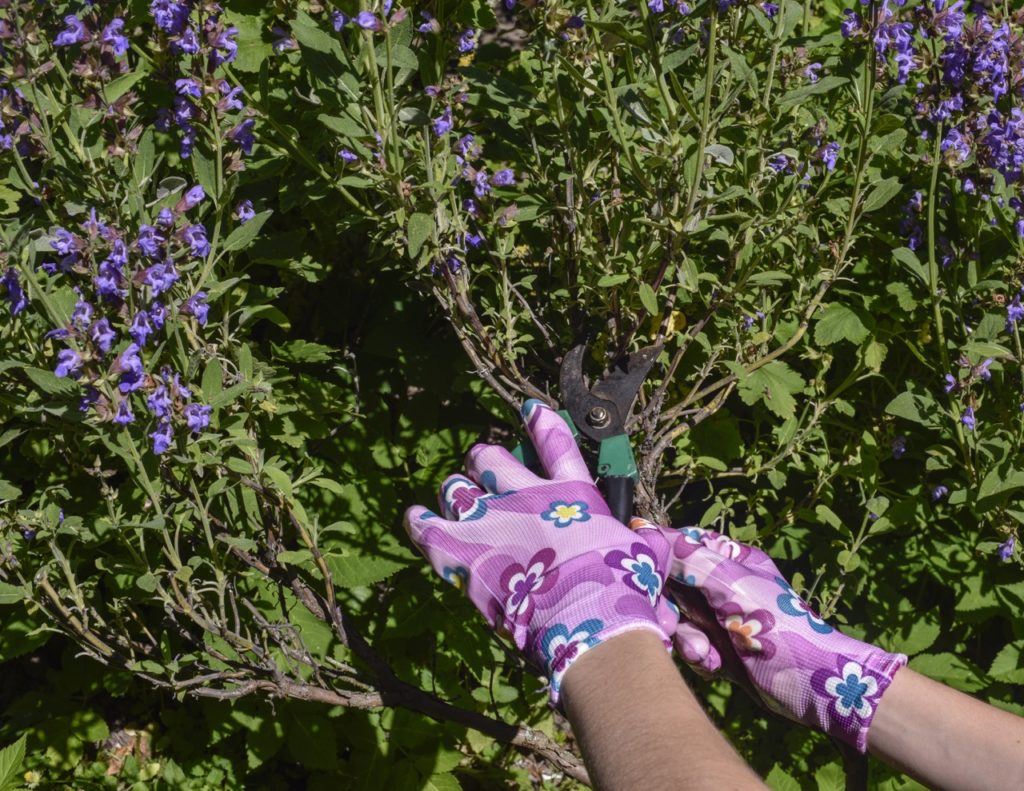
However, while this keeps your garden looking neat, you could consider leaving dead material in perennial beds and borders in place to provide a habitat for wildlife over winter.
Common Pests & Diseases
Usually, S. nemorosa is a relatively trouble-free plant to grow.
However, it is worth noting that the plant is a favourite with slugs and snails, which can pose quite a threat to young plants in particular.
Encourage natural predators like thrushes and hedgehogs to keep down pest numbers, and protect young plants where these are a particular problem.
Container Growing
S. nemorosa can also be an interesting choice for growing in containers.
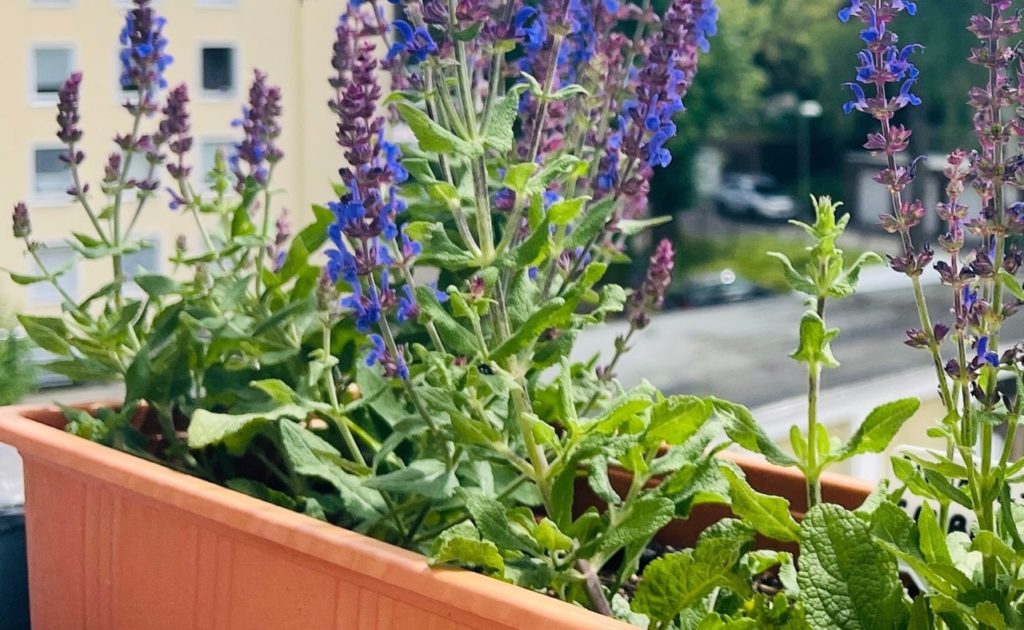
Since they are fairly compact plants, which will spread to around 50cm tall and 30cm wide, these can work well in pots in a container garden.
The key thing to remember if growing in containers is that you will need to water more during dry periods since containers can dry out more quickly.
Companion Planting
S. nemorosa works very well with other Salvias, which come in a range of colours and heights.
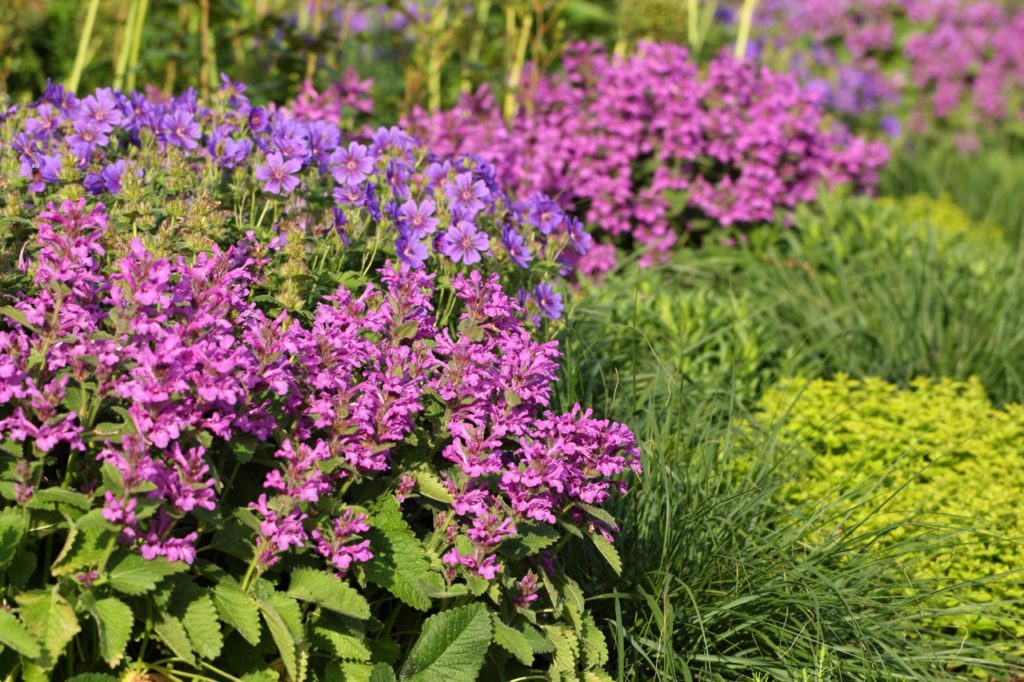
They can also be great for underplanting below roses, and a range of other flowering shrubs that like similar growing conditions.
These plants also look wonderful with other herbaceous perennials, including but certainly not limited to penstemons, eryngiums, achilleas, nepetas, verbenas and veronicastrums, and also look wonderful alongside ornamental grasses.
References
- 1Salvia nemorosa. (n.d.). Kew Royal Botanic Gardens. Retrieved March 24, 2023, from https://powo.science.kew.org/taxon/urn:lsid:ipni.org:names:456774-1
- 2nemorosa – Translation and Meaning in Almaany English-English Dictionary. (n.d.). Retrieved March 24, 2023, from https://www.almaany.com/en/dict/en-en/nemorosa/
